Is Kale Lettuce? Kale is a popular type of leafy green that is similar to spinach that is often used in salads. It is classified as a superfood because of the large number of nutrients present in the plant that are healthy for your body. But is it just a glorified type of lettuce that just has a different name?
Kale is a distinct and separate plant species to lettuce that comes from a completely different plant family. Kale is a brassica whereas Lettuce is a member of the family daisy family. Kale has a distinctly different flavor to most lettuce varieties that are reminiscent of other plants within the brassica family.
This is not surprising as many of the Brassicas that we commonly eat, such as cabbage, broccoli, cauliflower, kale, Brussels sprouts, collard greens, Savoy cabbage, and kohlrabi, are actually the same species, Brassica oleracea.
The factor that defines the plants as the same species is the ability for the plants to interbreed to produce viable offspring. This means that there is less than 1% difference in the genetic makeup of all these cultivars.
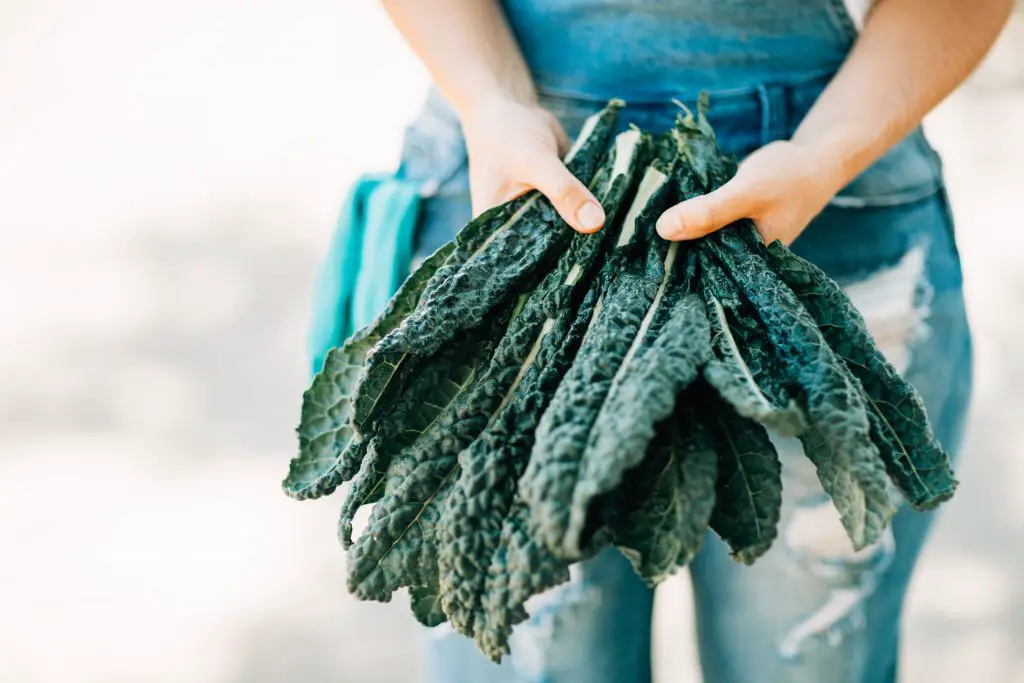
What Is The Nutritional Difference Between Kale And Lettuce?
Both kale and lettuce are largely composed of water and a fair amount of cellulose (fiber), which makes them fill you up. Both are fairly high in niacin (vitamin B3), copper, and vitamin A, all of which are good for your health. Both are also high in Vitamin C, a diverse vitamin that can fight cancer, can boost your immune system, and keep your eyes sharp, among many other benefits. Kale also has a greater concentration of calcium, some B1 and B6, E and K, iron, magnesium, phosphate.
Due to these differences, Kale is generally considered the healthier option though both plants are recommended within a balanced diet.
Is Lettuce Or Kale Easier To Grow At Home?
Both plants are fairly easy to grow at home and can be grown from seed quickly and easily. However, Kale does require significantly less work to maintain a constant supply. In most climates kale really only needs to be sown twice a year to maintain a constant supply year-round.
Kale is best sown in mid to late summer. At this time of year, the plant will grow quickly and become established through the autumn. From this point onward harvests can be taken throughout the Autumn, Winter, and Spring continuously until the plant sets seed in mid to late spring.
To cover the gap between mid-spring and autumn a second sowing is required which is best done in late winter of very early spring. In most climates, this needs to be done indoors to ensure a reasonable growth rate.
To maximize this growth rate it is best to use a heated propagation tray. The one we recommend is the iPower Heating Seed Starter Germination Kit, shown in the picture below largely because it has a vented humidity dome and is relatively inexpensive.
The heated propagation trays provide the ideal growing conditions for germinating seedlings and they are not overly expensive to purchase. The one we recommend is the iPower Heating Seed Starter Germination Kit, shown in the picture below largely because it has a vented humidity dome and is relatively inexpensive. Click on the link to see the current price on Amazon.

In the case of lettuce, it is also easy to grow but has a much greater tendency to bolt. When this occurs the lettuce becomes bitter and generally not nice to eat. As a result of this lettuce needs to be regularly resown to ensure that you have a constant supply.
The method I use is to plant a new tray of seeds each time the previous one has been planted out into the garden. This means that typically lettuce seeds are being planted every month or so.
To extend the life of lettuce in hot conditions it is advisable to plant at least some of the lettuce plants in shade to reduce to speed that lettuce bolts. It is also advisable to be ruthless with the removal of lettuce that is past its best as this will ensure that you have the space required for new plantings.
Are There Different Varieties Of Kale?
Yes, there are several different varieties of kale that come in is a range of different colors, shapes, and sizes. These varieties can generally be classified into the following categories;
- Curly Kale
- Lacinato Kale
- Red Russian Kale
- Ornamental Kale
- Chinese Kale
- Redbor Kale
Curly Kale
Curly kale is one of the many types of kale available to the general public and it can be found in stores year-round. It has a dark green or sometimes purple color and the texture of its stem is tightly wound curls at the end of the leaves.
Curly kale is quite often in greens packaged like smoothies and salads, is a more common variety, as it’s less expensive. It works well in many recipes as long as you use it sparingly. If used right, you’ll be able to create salads of a variety of flavors both sweet and savory. The taste tends to range from being bright, but it may seem bitter other times. It is definitely pungent like other members of the brassica family.
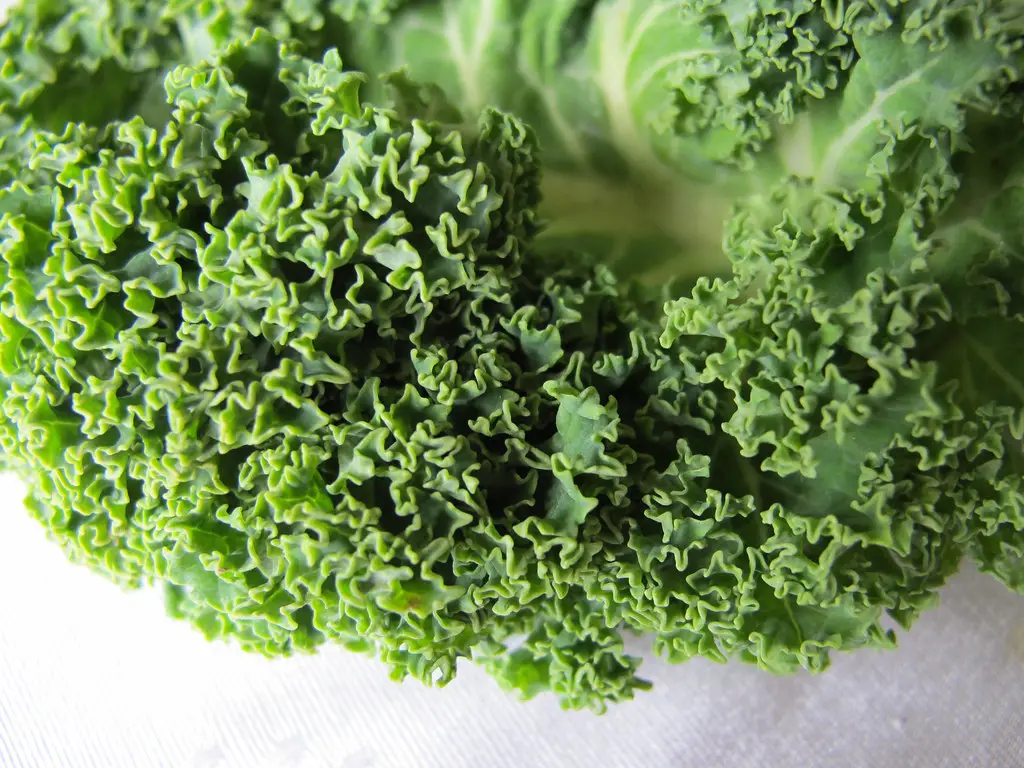
Lacinato Kale
Lacinato kale is one of the most popular varieties of kale that is widely sort after by chefs. Lacinato kale has several other names which include dinosaur kale, Tuscan kale, black kale, and Cavolo nero. These particular varieties were developed in Italy and have been widely used in the local cuisine for centuries.
This type of kale typically has blue-green leaves that are about two to three inches wide, with a crinkly appearance. The plant is often used as a mid-winter staple in things like soups and salads.

Red Russian Kale
Red Russian varieties which are also known as cow cabbage has large, flat leaves that are dark green with reddish-purple stems. The leaves have a shape that is a similar shape to rocket lettuce that though the size of the leaves is significantly larger.
These varieties do not appear commonly in grocery stores or supermarkets. It is far more likely that these plants will appear in places like natural food stores or farmer’s markets.
Red Russian kale is generally considered to be sweeter and slightly more peppery than other types of kale however it is prepared in a similar manner to other varieties. This particular variety is also known for being used in salads when the leaves are young and tender.
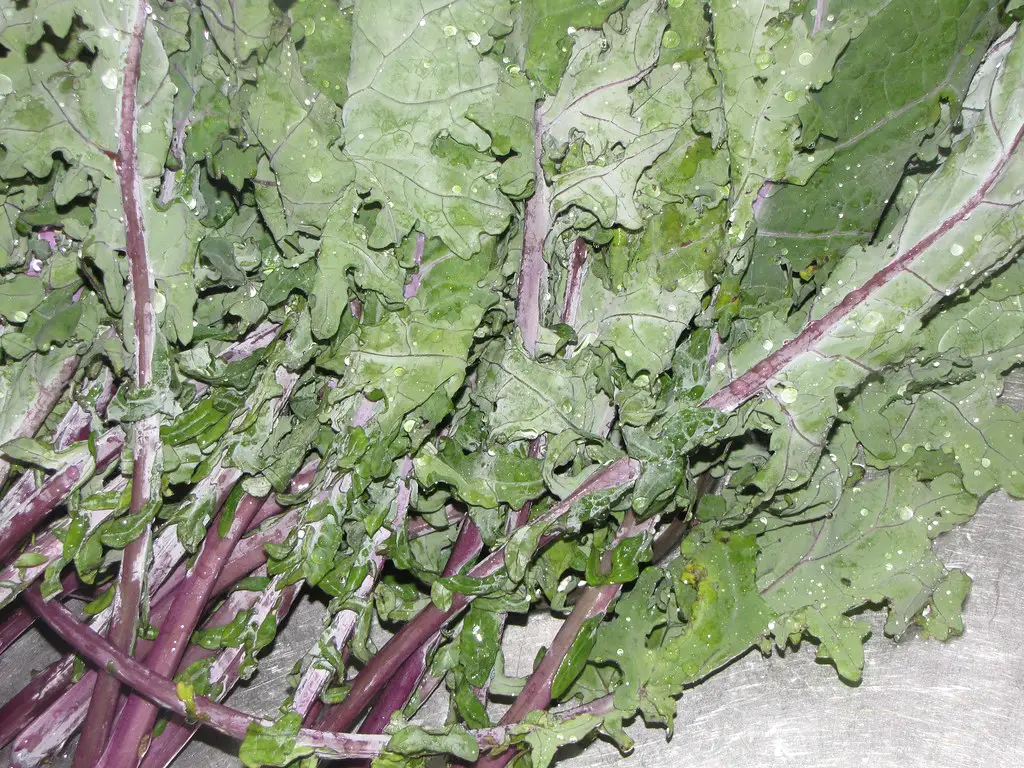
Ornamental Kale
Ornamental Kale is the same species as regular kale (Brassica oleracea). But despite the plant being referred to as ornamental, it is edible, though the leaves are generally tougher. However, due to it being tough it is generally used sparingly in things like soups and stews.
These particular varieties also take much longer to mature but they produce a more compact head than varieties grown for food. However, as these varieties are primarily bred for appearance they tend to be more colorful see the example below.
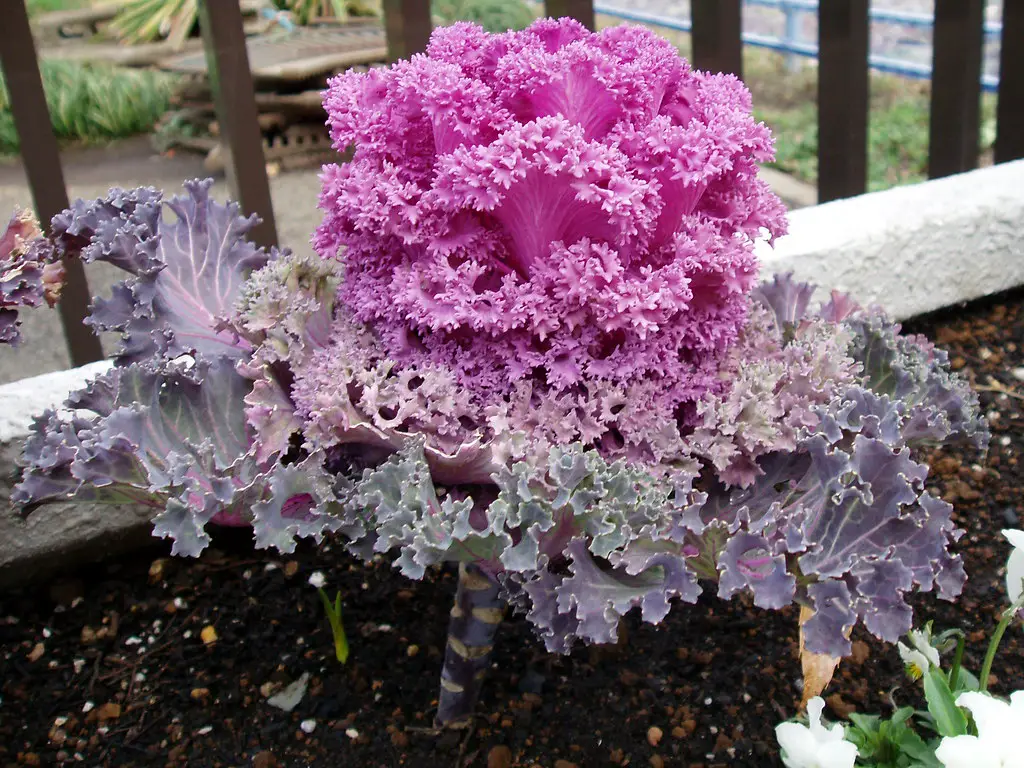
Chinese Kale
Chinese kale is a type of kale that tastes slightly different from other varieties of Brassica oleracea, as it is similar to both cabbage and Brussels sprouts. Aside from its taste Chinese kale looks distinctly different from other varieties. It looks like a hybrid between broccoli and spinach as it has large flat gloss leaves that sit upon thick stalks.
Both the stems and leaves are used in cooking, with the plant being commonly used in stir-fries. Leaves are also commonly steamed as a side dish accompaniment to things like baked salmon.
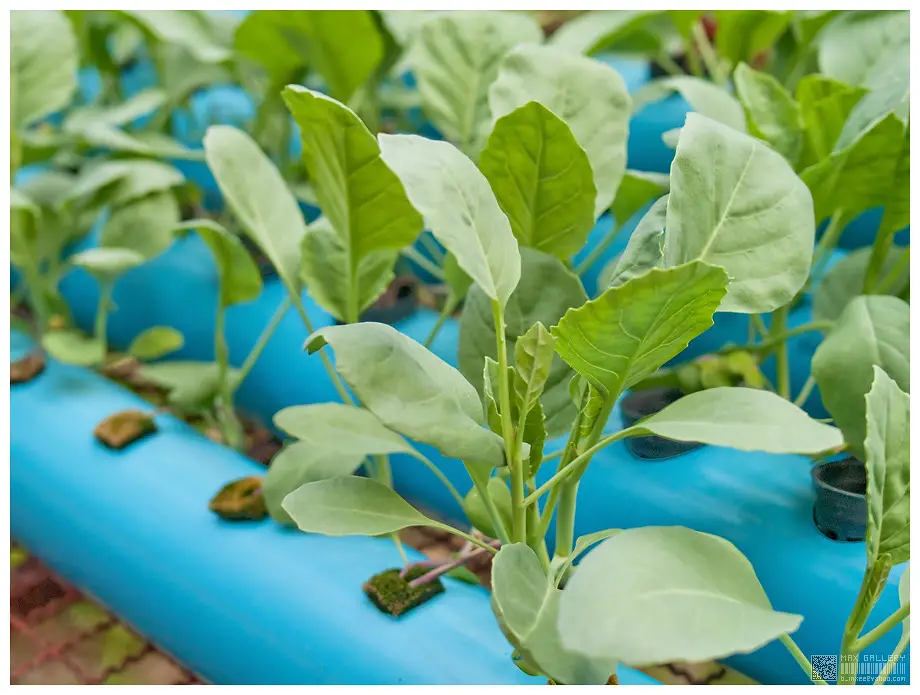
Redbor Kale
Redbor Kale is a special type of kale that is slightly less bitter than the common kale. It is used as both an ornamental and edible plant in the garden. The variety has colors ranging from red to deep purple with a hint of green. When using the plant in dishes it can be roasted, or fried and it is also suitable for use in soups like most other varieties of kale.
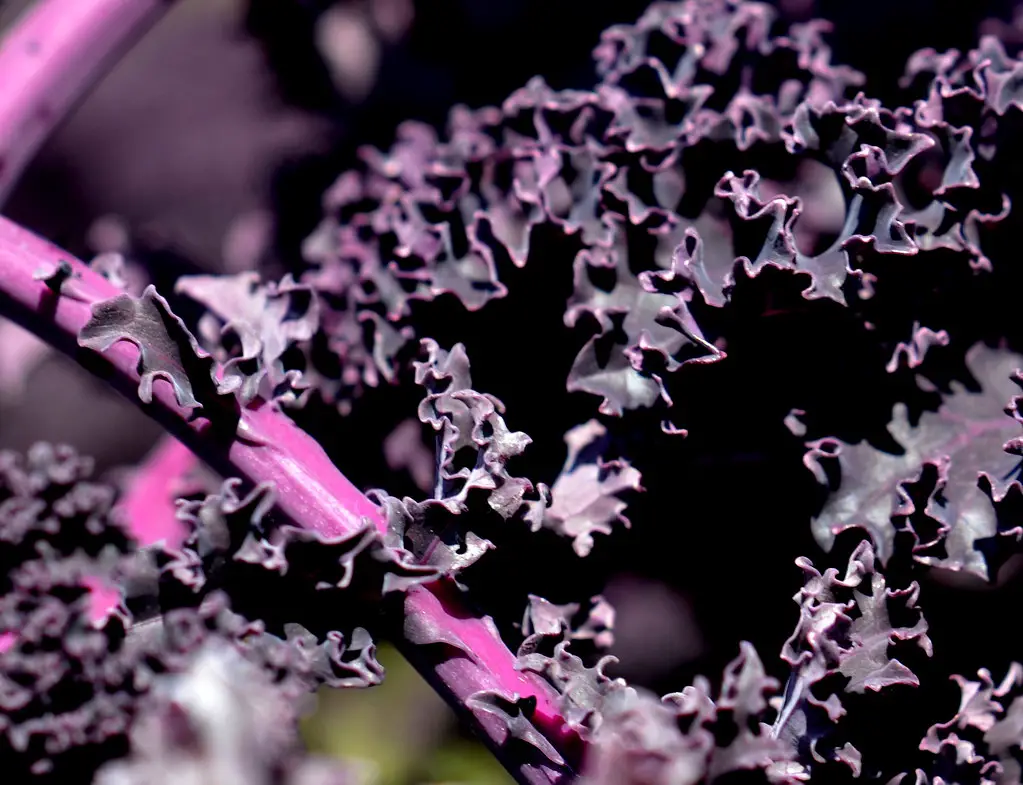
Are There Different Varieties Of Lettuce?
There are many different varieties of lettuce. These varieties can be divided up into 4 groups;
- Crisphead
- Romaine
- Loose Leaf
- Butterhead varieties.
Crisphead
Crisphead lettuce are those varieties that have large rounded heads. The most well-known of these varieties is iceberg lettuce which is sold widely in supermarkets. These varieties generally have large leaves that are crispy and crunchy and have a relatively mild taste.
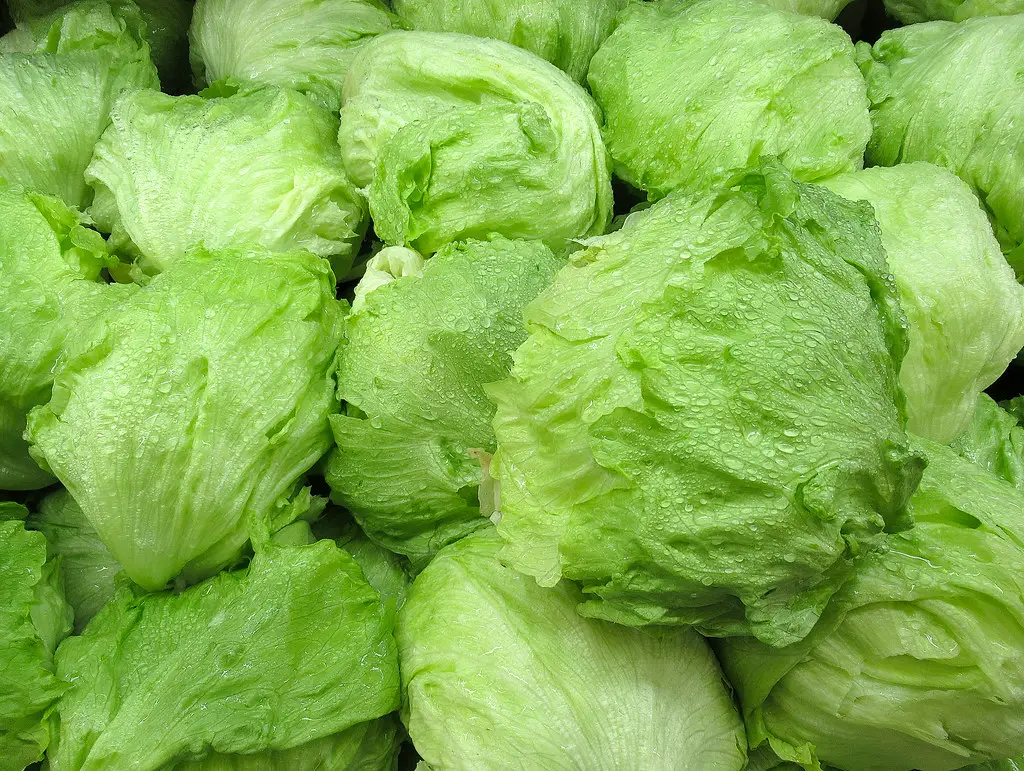
Romaine
Romaine is another widely used lettuce that is frequently referred to as Cos lettuce in some countries. The Romaine varieties have an oblong shape and a relatively tougher texture compared to other varies. This is largely because the central stem of the leaves is thick compared to other varieties.
This variety is a staple in salads and used when it is a baby and also when it is mature. When picked young the leaves of this variety often feature in loose leaf salad mixtures along with several other varieties. As a mature is often used in things like Ceasar salads but it is also occasionally grilled or used as a filler in sandwiches.
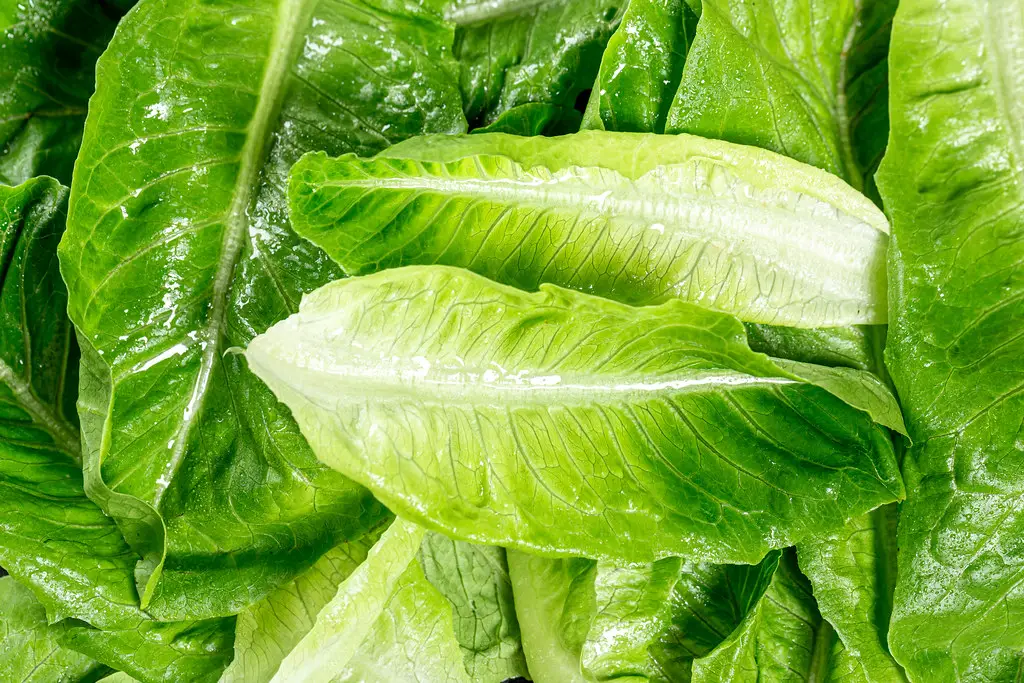
Loose-Leaf Varieties
Loose-leaf varieties are a popular varieties amount home gardeners owing to the capacity for these plants to be picked over an extended period of time. The reason for this is that the loose-leaf varieties do not form a head like romaine or crisphead lettuce. Instead, the plants produce a series of individual leaves which can be harvested periodically as the plant matures.
The loose-leaf varieties generally have smaller softer leaves that are mellower in flavor, The exception to this is red varieties which have a more bitter flavor.
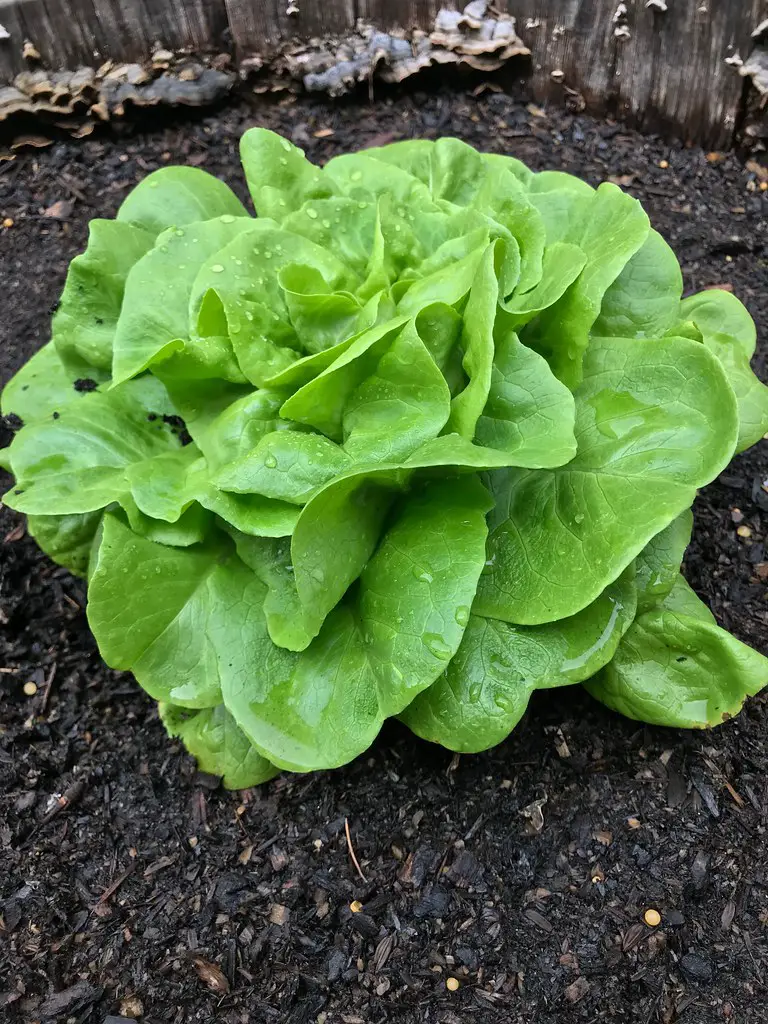
Butter-Head Lettuce
Butterhead lettuce varieties are similar to loose-leaf varieties as they do produce a head like crisphead or romaine varieties. These varieties have soft smooth-textured and thin green leaves which are much more tender than other varieties and generally do not have any veins. Butterhead varieties whose taste is milder, sweeter, and pleasant to the palate are the pick of the varieties for me.
Related Articles
Is Lettuce A Vegetable? If So Why?
How to harvest kale to keep it growing
Can You Harvest Romaine Lettuce More Than Once?
How to harvest lettuce all year round?
